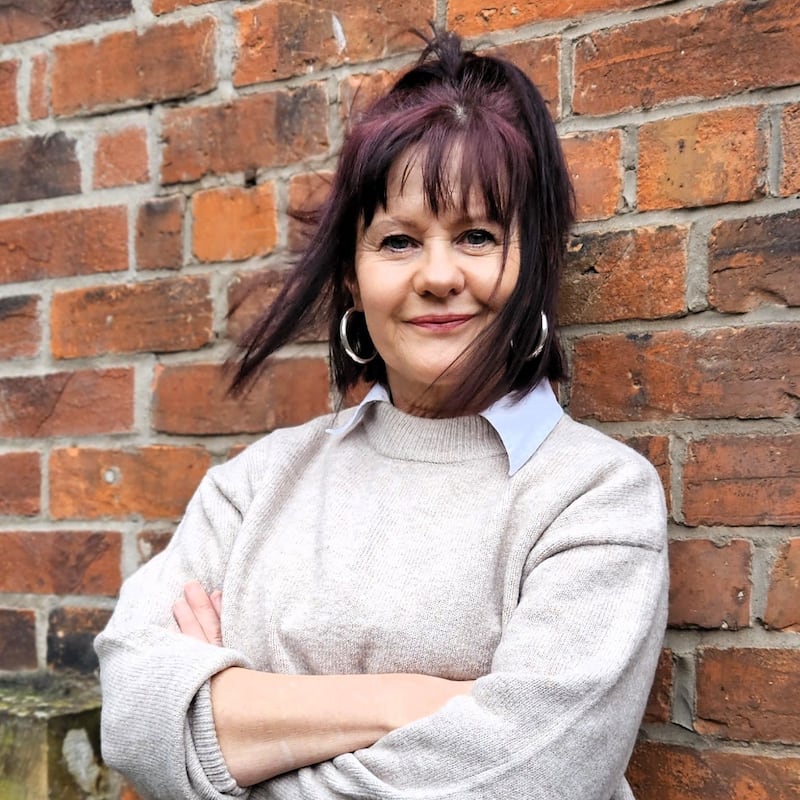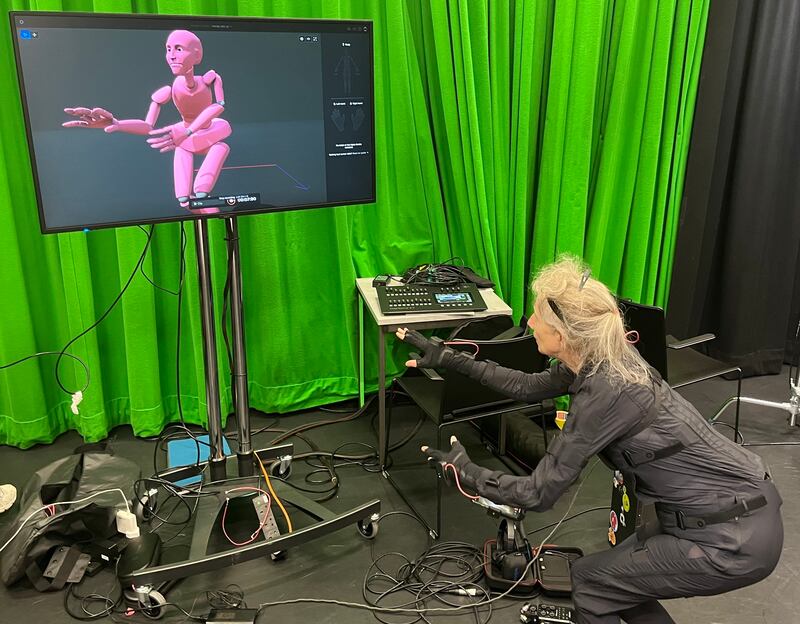In an interview for Theatre Ireland magazine in 1989, this writer talked to the founders of Big Telly, an independent theatre company set up by three drama graduates of the University of Kent, Zoë Seaton, Jill Holmes and Kate Batts. It is now the longest-established professional company in Northern Ireland, still driven by the sparky trio’s early aim of making work that would constantly surprise, stimulate and ignite the imagination.
Over the years Big Telly has forged an international reputation for innovation and artistic daring, pushing back the boundaries of traditional theatre and fostering site-specific collaborations across other genres and disciplines.
Its latest project, Granny Jackson’s Dead, is written and directed by Seaton. An immersive, characteristically wacky re-creation of an Irish wake, staged in a family home in Belfast, it is described as “the session to end all sessions, just what Granny would have wanted”. The presentation combines tradition with technology as a fictional family grapples with how to let Granny’s spirit go free while preserving her digital legacy.
It will be premiered this month at NI Science Festival, in partnership with Manchester Metropolitan University, the UK’s National Centre for Social Research and the Centre for Cultural Value at the University of Leeds. It is one of only five projects to have received one of last year’s Collaborate fund research grants, which support innovative research projects between the cultural sector and academics, in this case investigating the intersection of immersive theatre and arts-led dialogue, focused on the effects of digitising memory and memorialisation.
READ MORE
From the start it was clear that this company would do things differently. The decision was taken to step away from Belfast’s independent-theatre hub and base itself in Seaton’s home patch of Portstewart, a seaside town on the north Co Antrim coast. For some years they operated as a joint entity, writing, performing, producing and directing their own work, while also presenting radical takes on the classics.
The company structure changed when Batts moved to Tasmania and Holmes was appointed arts officer in Downpatrick and then director of the newly built Market Place Theatre in Armagh. Directing had always been Seaton’s declared passion, so the decision to take on the role of artistic director came naturally. In the years that have followed, she has emerged as an influential, innovative force in theatre in Ireland, Britain and beyond.
In 2005, Seaton signalled her bold intentions through a collaboration with the musical theatre specialist Paul Boyd on The Little Mermaid, a spectacular non-verbal, water-based version of Hans Christian Andersen’s children’s story, staged in a swimming pool. By the time it closed, a year and a half later, it had played to more than 30,000 people in swimming pools across the world.
“It was a landmark for us, as our first site-specific piece”, Seaton says. “I’d previously been doing a lot of work in England and had been offered a job with Hull Truck Theatre Company. I talked to its artistic director, John Godber, about the sort of work I would like to make and mentioned The Little Mermaid as an example. He said that no company over there would let me do it and reckoned it would be far more realisable within my own company.
“I’d thought it was inevitable that at some point I would move permanently to England, but that conversation with John made me see things differently. I always felt that artistic freedom was what Big Telly represented, but it was a gift whose value I hadn’t fully appreciated until then.
“Adventure and curiosity are still what we are about: it’s our life blood, putting together a team of people to get excited about a new idea, working on it and making it happen. That somehow feels easier than doing more rep-based pieces. We all go on the ride together.”

Momentum slowly built as the company branched out into the exciting, unpredictable directions its audiences have come to expect. In Seaton’s words: “We hijack familiar stories and spaces, like shops, houses, cafes, to make audiences feel both safe and brave. We mix tradition with tech to make bold new story worlds with and for the wider community.”
She identifies the Creative Shops project as the next big turning point. The company had established a sound reputation for high-quality touring work, but, for funding reasons, everything had to be planned well in advance, which resulted in its precious artistic freedom being diluted.
In 2011 Coleraine Borough Council invited them to make a piece connected to the Olympic torch, which would pass through the town the following year. It offered a princely fee of £500, or about €580 at today’s exchange rate. Never one to turn down an opportunity, Seaton contacted Shelley Atkinson and Itxaso Morena, two remarkable performers whom she met in England and who remain connected to the company.
“I invited them over for a weekend to work on putting together something in a shop window,” she says. “We staged the complete and total Olympic Games in the window of an old, disused bank on Portstewart’s seafront. We filled it with sand and produced a 10-minute silent clown piece, in four specific time slots. By the end of the weekend 450 people had seen it, lots of them asking what our next show was. If I’d done it in a theatre I’d have been lucky to get three people in.
“It struck me that by only working in venues or arts centres, or with specific groups, we’d been missing out on 80 per cent of the population. It was in shared spaces like the high street that we were able to reach them. We didn’t advertise; we just wanted people to walk past, look in the window and engage with whatever was being offered. In time we struck up a dialogue with local traders and tracked the economics of the work, being mindful of the value of the arts to independent businesses in the town.
“We went on to devise many more short pieces for other public spaces, which attracted enthusiastic audiences. We recruited creative-arts trainees and tasked them not only with making new work but with questioning how we invited and welcomed the public. We were interrogating as much the context of being there as the content of what we were offering.”
The more I delved into it, the more it felt like a live subject, something that could be put on in a house, where people could visit and take on certain roles
A brave new world opened up when the company began making games, working alongside Coney, a renowned immersive company based in London. Together they developed an app that sped its users on madcap journeys to destinations familiar and unknown. When the Covid pandemic descended, that experience stood them in good stead.
While many independent companies folded, Big Telly flourished through a thrilling mix of interactive online adventures, whose fragmented narratives connected powerfully with worldwide audiences. In turn, technology allowed the company to track viewers’ spontaneous responses and participation. This unscheduled success seeded in Seaton a growing fascination with digital technology, from which emerged the idea for Granny Jackson’s Dead.
“Digital memorialisation is about how, in the future, we will remember people,” Seaton explains. “I found an article about a family who had lost a wee boy. They had taken all the videos they had of him and made a computer game so that everyone could enjoy playing with him. Some people may find that gruesome, but it was their story, their way of doing things.
“There’s an entire industry growing around grief tech and digital memory. It starts in small ways, like receiving or sending messages from a bereaved person’s social media or making a hologram of the deceased.
“The more I delved into it, the more it felt like a live subject, something that could be put on in a house, where people could visit and take on certain roles. We had conversations with researchers and tech people about digital theatre and whether liveness was important. The researchers are particularly interested in whether this kind of thing is good for us; they question who’s checking on what it’s doing to our heads.”

The piece will be domestic and accessible, but it will also contain big issues to consider. Some people will be deciding on the best way of remembering Granny Jackson, while others will be thinking more about how, or if, she would want to be remembered.
Seaton read an article about digital memorialisation by Eleanor O’Keefe of the National Centre for Social Research. She contacted her and a conversation began.
“We’d decided that we were going to make a theatre piece but did not know where. We started batting ideas around with the researchers. When the idea of doing it in a house emerged, you could feel the mounting energy in the room. We began a search for an academic partner and were really delighted when Manchester Metropolitan University came on board.
“It’s been brilliant working with the university’s theatre department on the dramaturgy, as well as with its school of digital arts, where the digital assets were made. They include an avatar of Granny Jackson, so audiences will be able to meet her virtually at the house, if they wish – or if they dare.”
Granny Jackson’s Dead is at 47 Malone Road, Belfast, BT9 6RY, as part of NI Science Festival, from Thursday, February 15th, to Sunday, February 25th

















